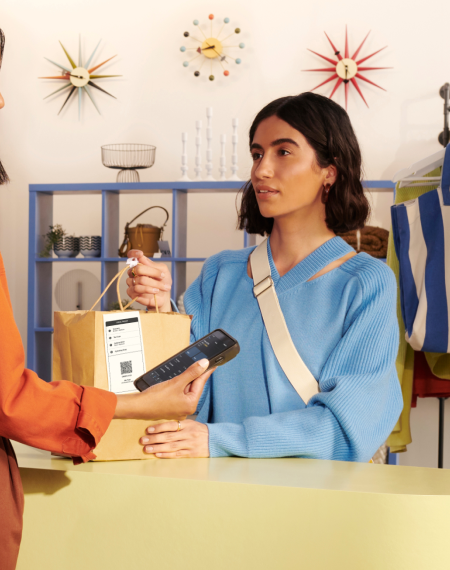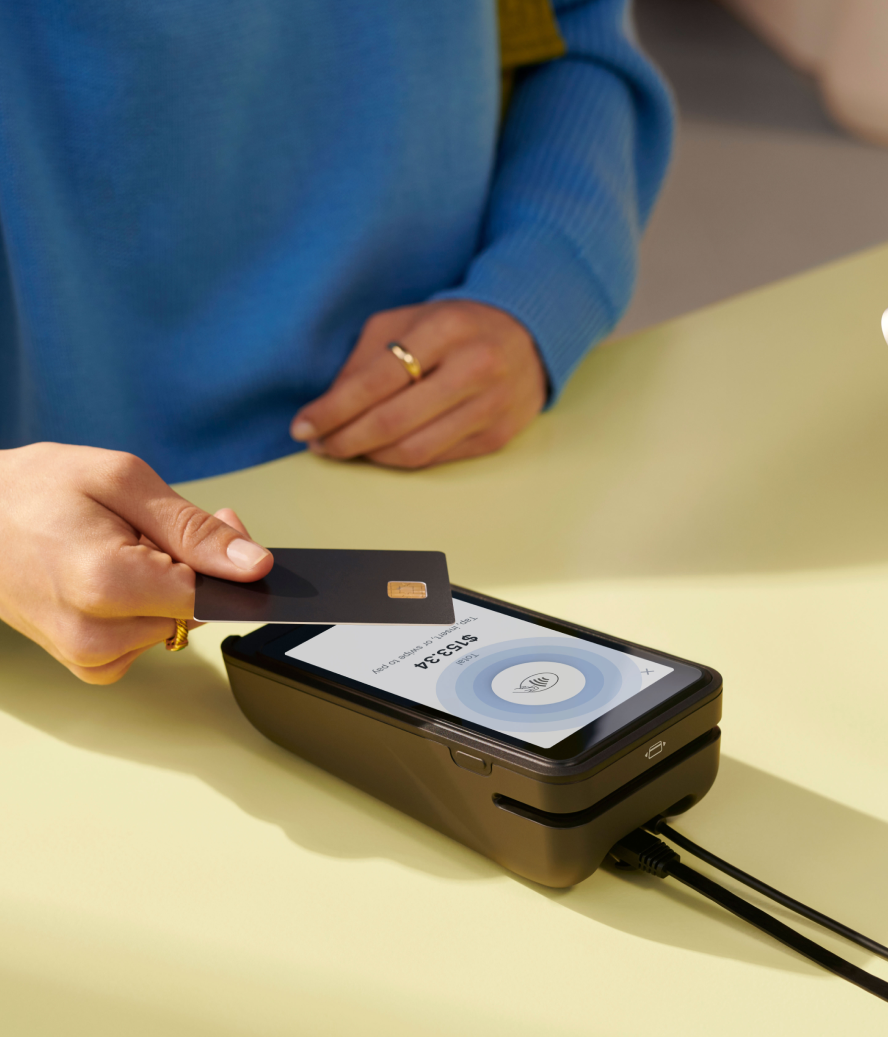Think about the things retailers compete on most: price, quality, and enough inventory to meet demand. A business’s ability to compete on these things often boils down to the relationships it’s built with suppliers.
As with any relationship, partnerships with suppliers need to be nurtured. The relationship needs to be beneficial not only to your store, but also your vendors. Preferential treatment, discounted rates, and greater stability are all up for grabs if you’re on good terms. Supplier relationship management (SRM) is the key—and we break it all down for you here.
Unsure where to start? This guide to supplier relationship management explains how to build stronger relationships with your vendors.
What is supplier relationship management?
Supplier relationship management is the way a business develops relationships with wholesalers, manufacturers, and distributors. Also known as vendor management, a strong SRM strategy helps you source new products and minimize risk.
Why is supplier relationship management important?
Strong relationships with suppliers impact the entire procurement process. It increases the quality of service you get, reduces cost, and bolsters supply chain management—minimizing disruption to demand that could result in shoppers being unable to buy products from your store.
Goals of supplier relationship management
There are three main goals of SRM: supplier risk management, streamlining supply, and maximizing value.
Supplier risk management
One of the biggest risks posed to retailers is stockouts. This happens when suppliers can’t meet customer expectations, often forcing consumers to buy products from another retailer. Stockouts cost US and Canadian retailers $350 billion in missed sales each year.
Improving your relationship with retail suppliers helps streamline the supply process and upgrade risk management. It minimizes the number of awkward conversations you’ll have telling customers a product they love is out of stock.
“We sell a very rare product with few suppliers,” says Nicholas Fiorentino, owner of The Meatery. “Maintaining an excellent relationship with our suppliers is critical to our business. I’m sure you’ve read there are beef shortages. We’ve never felt a moment of that, and I cannot help but credit it to our relationships we’ve built.”
Streamline the supply process
Suppliers are experts in manufacturing and shipping. Lean on their insights to streamline the supply process, reduce waste, and save money.
Let’s say you’re relying on suppliers to provide inventory for your pop-up food truck. Your supplier has a minimum order quantity (MOQ) of 50 units, but you don’t have enough space inside the truck for that many products.
Develop supplier relationships to make them more lenient. There’s a chance they can lower your MOQ to 40, and therefore prevent waste from inventory that can’t be sold due to poor food storage conditions.
Maximize supplier value
Aside from providing inventory, a strong supply base maximizes the value you get from strategic partners. For example, retailers with fast-moving inventory might need faster response times from suppliers. Those they’ve already built strong relationships with might be more responsive, or even provide a direct phone number for their point of contact.
💡 PRO TIP: Shopify POS comes with tools to help you control and manage your inventory across multiple store locations, your online store, and your warehouse. Forecast demand, set low-stock alerts, create purchase orders, know which items are selling or sitting on shelves, count inventory, and more.
The supplier relationship management process
- Segment suppliers
- Collaborate with suppliers
- Build a supplier management strategy
- Track results
We can break the SRM process down into four categories. Let’s walk through each one:
1. Segment suppliers
Not all suppliers are created equal. Critical suppliers, who have a greater impact on your retail business than others, include those who provide:
- Bestselling products
- High quality, premium items
- Inventory at the lowest cost
2. Collaborate with suppliers
Once you’ve identified strategic suppliers, prioritize your relationship-building so you can extract the most value from them. Relationship-building is a two-way street; collaboration is the key to a successful SRM program. Work with your most important partners to manufacture, purchase, and ship inventory in a way that keeps both parties happy.
“The best advice I can give is to meet people in person if you can,” says Melanie DiSalvo, founder of virtue + vice. “When I worked in fast fashion, my boss always joked that I could get things done that no one else could. Which was true. But I was also the only one who spent a ton of time in the factories, getting to know everyone from members on the sewing line to the owners. When you know someone, and they like you, it’s amazing how many favors they will do for you.”
3. Build a supplier management strategy
How do you plan to work with your suppliers? How often will you communicate with them? What metrics will you use to measure supplier performance? Discuss those points with each strategic supplier at the beginning of a new SRM strategy.
Krystal Suffling, branch manager at Aspire2, recommends providing genuine, honest feedback on internal processes that benefit both you and the supplier, or that will benefit the supplier in a way that might not occur to them. “For example, if you know there’s an untapped digital marketing side to the business that they’re not seeing, then let them know,” she says.
“Additionally, if you can help to streamline processes that the supplier currently works with you on, then they know you’re not just trying to get on their good side, and they’re usually very appreciative of their feedback.
“I’ve personally helped suppliers with everything from internal shipping processes—using my feedback—right down to simple aspects of their website that I thought could be better optimized (page speed and basic SEO are regular ones I pick up on!”
4. Track results
Is your supplier meeting the goals you outlined at the start of your relationship? Continuously monitor supplier performance data to confirm that they’re meeting quality, service, and overall business objectives.
The same applies to your retail store. Evaluate whether you’ve given enough lead time, are meeting MOQs, and have met a supplier’s payment terms. Keeping suppliers happy is the key to minimizing supply interruptions.
💡 PRO TIP: With Shopify POS, you can run your online and retail stores from the same platform without using third-party APIs. Shopify is your system of record—product, inventory, sales, and customer data updates automatically whenever you make a sale online or in-person, and you pay just one straight-forward monthly subscription.
Benefits of a supplier relationship management program
A supply management program can positively impact your business in numerous ways. The primary benefits of an SRM program include reduced costs, a stronger supply chain, and increased innovation.
Reduced costs
The less you spend on inventory, the greater your profit margins. Building a strategic supplier relationship often grants you access to special discounts.
Take it from Yedra Lopez Gragera, business operations at OpenStore. “We’re constantly asking suppliers about what they’re working on next and the new products we might be able to offer our brand,” she says. “Sometimes we can also uncover an overstock, which allows us to buy products at a cheaper cost or production runs with reduced lead time.”
Inflation is also increasing the cost of raw materials, and many suppliers are hiking their prices as a result. Those your supplier relationship manager has relationships with, however, are more likely to stick with their previously-agreed-upon prices. Good relationships will reduce price fluctuations that impact profits.
Bolster supply chain
Political conflict, weather conditions, and strikes all have a major impact on air cargo, ports, and shipping. This is why 39% of brands we surveyed say shipping/manufacturing disruptions and shipping costs will be the biggest supply chain challenges they’ll face in the next 12 months.
Suppliers often prioritize orders from the vendors with whom they have the strongest relationships. Should they overcommit and not have enough product to meet customer orders, suppliers might prioritize your demand over other, less favored vendors. This steady supply of new inventory could be a competitive edge.
Increased innovation
Suppliers and manufacturers need to be innovative to stay competitive. So do retailers. As part of your SRM program, explore whether you can lean on your suppliers’ innovation to speed up that of your own business.
For example, let’s say a candle-making supplier mentions a new product variation with sustainably-sourced ingredients. Ask if you’re able to sample the new product, and if so, mark it up. One report found US consumers are willing to pay an average premium of 11% for products with a minimized environmental impact.
Supplier relationship management challenges
Supplier relationship management is essential, but it is by no means easy. Let’s examine some of the common SRM challenges.
Lack of visibility
Suppliers aren’t part of your retail business, but they’re one of the most important assets. That said, lack of visibility into your suppliers—such as their commitments to other retailers and their capacity—can be a challenge.
“Trust is essential in any relationship, but it can be tough to build trust with a supplier,” says Helen Armstrong, founder of Apsley and Company. “Just like any relationship, supplier relationships need to be nurtured through timely communication. This cannot be easy to do when managing multiple suppliers and trying to run a business simultaneously.”
Similarly, most retailers don’t give suppliers visibility into their own inventory. Demanding a short turnaround time for a product that’s low on stock is a recipe for confrontation.
Focusing too much on cost
It’s important to source products that you can sell at a higher price in your retail store. But when you’re managing suppliers, remember that they’re operating businesses, too. Bartering on price can put pressure on the relationship.
If your supplier sells high-quality products, consider being more lenient on price. “It is OK to not get the lowest price in exchange for having the best mutually beneficial relationship,” says Nicholas Fiorentino, owner of The Meatery.
Unclear KPIs
Supplier relationships often go amiss when the parties have different expectations. This is largely due to unclear key performance indicators (KPIs) and metrics. For example, if you expect products to be dispatched within three business days of placing an order, but your supplier thinks five days is normal, can cause friction.
Tips for better supplier relationship management
Set clear objectives
Earlier we mentioned that when you manage supplier relationships, the connection can become frayed when both parties are unclear on what’s expected of them. As a supplier relationship manager, you should share your business objectives before working with any supplier to avoid miscommunication in the relationship.
If you’re gearing up for a huge Black Friday sale, for example, set clear objectives with your supplier base beforehand that outline how many units you need and within what timeframe. It will ease tension if you’re both working toward the same goal.
Similarly, if your retail store is prioritizing cost savings after a slow quarter, communicate that with your supplier. They’ll appreciate a heads-up if demand is changing, and if the relationship is strong, they may be able to offer solutions, such as a discount or reduction in MOQs.
💡 PRO TIP: When you use different platforms to run your online and retail stores, inventory discrepancies are more likely to happen. This can lead to more frequent inventory counts to reconcile differences and ensure stock levels are accurate.
Pay suppliers on time
Would you be likely to continue doing business with a customer that continually pays late? Chances are, the answer is no. Your suppliers would say the same. Make a conscious effort to pay all suppliers according to the terms agreed in your contract.
“Not skipping a payment demonstrates your respect for them and your awareness of their requirements,” says Dean Lee, head of marketing at Sealions. “If you accumulate enough relationship currency over time, you might be able to receive exclusive discounts for making a payment.”
Cash flow management is a struggle for most retailers, with 25% of small business owners holding fewer than 13 cash buffer days in reserve. Accounting software, inventory forecasting, and incentivizing customers to pay for products in full can provide extra leeway so that suppliers will be paid on time.
Use detailed contracts
A contract is a legally binding agreement between your retail store and a supplier. It holds both parties accountable for the quality of products bought and money exchanged. As part of yours, include key supplier data like:
- Lead times
- Shipping times
- Product quality
- Payment terms
- Contract length (i.e., how long you agree to buy/sell inventory)
“Miscommunications lead to misunderstandings, which lead to lost money and conflict,” says Nick Huber, founder of The Sweaty Startup. “As a business owner, your job is to be understood. The way to do that is by following up important conversations with a record of what was said. Concise communication by email is the way to do that!”
Establish consistent communication lines
Retailers often fall into the cycle of only talking with suppliers when they’re placing new orders (or worse, rectifying a mistake). That doesn’t help build relationships that benefit both parties.
Regularly communicate with your suppliers—even if there is no agenda. For example, you could:
- Wish them a happy holiday throughout the festive season
- Ask whether they’re planning to launch any new products or services
- Offer to help with something you’re skilled at (e.g., marketing or advertising)
“Suppliers appreciate it when we show interest in their process, lead times, and where and how they source raw materials,” says Yedra Lopez Gragera, business operations at OpenStore. “Merchants that take the time to understand the ins and outs of their suppliers are going to collaborate better and have a more constructive relationship overall.”
Continuously monitor risk
Worker protests, environmental changes, and political conflicts often come without warning. But when you continuously monitor risk, any issues can be brought up with your supplier before they impact supply.
Let’s say that a once-reliable supplier is falling behind on their lead times. Predicting risk in advance gives you plenty of time to find a solution—be that scheduling a meeting with the supplier to discuss why they’re falling behind, or looking for another supplier who can meet your requirements.
💡 PRO TIP: Analyze your POS data in tandem with your ecommerce data to be more cost effective with your inventory, measure your store’s impact on online sales, repeat purchases, lifetime value, and more.

Supplier relationship management software
It can quickly become overwhelming to track relationships with suppliers, especially if you’re working with several, all of which supply different products with minimum order quantities, prices, and lead times.
Make it more manageable by using SRM software (also known as customer relationship management software) that integrates with your Shopify store, like Richpanel, Reamaze, or Segments.
Your SRM software should offer the following features:
- Supplier information portal to store key supplier data, such as their name, email address, and phone number.
- Contract management to create, sign, and save supplier contracts that are easily accessible by both parties.
- Real-time inventory management visibility so suppliers can accurately forecast demand ahead of time.
- Onboarding workflows that bring new suppliers up to speed with your business objectives, KPIs, and expectations.
- Accounting tools to request purchase orders, track invoices, and manage cash flow.
- Supplier performance management tools, such as scorecards that track the most important metrics and grade each supplier on how often they’re meeting expectations.

Improve supply relationship management for your business
Suppliers are the lifeblood of any retail store—especially those with whom you’ve built strong relationships. Mutually beneficial partnerships can offer price stability, increase innovation, and provide a constant supply of bestselling products.
Use the techniques we’ve shared here to build strategic supplier relationships. Just a few extra hours per month can make a huge difference to your bottom line.
Read more
- What Is Economic Order Quantity and How Can I Calculate It?
- 8 Benefits Of Outsourcing Order Fulfillment for Your Retail Business
- A Simple Guide to Cycle Counting in Retail (+ Best Practices & Benefits)
- Inventory Accuracy: How to Identify & Solve Discrepancies in Stock Levels
- A Complete Guide to the Retail Inventory Method (RIM)
- The Complete Guide to Purchasing Product Samples
- How To Source Fabric For Your Clothing Line Business
- 10 Ways On-Demand Manufacturing Can Help Retailers Streamline Their Operations
- The Retailer’s Guide to the Weighted Average Cost Method
Supplier relationship management FAQ
What is meant by supplier relationship management?
What is supplier relationship management with example?
Why is SRM important?
What are the 3 steps in supplier chain relationship management?
- Supplier identification
- Supplier qualification
- Supplier selection





